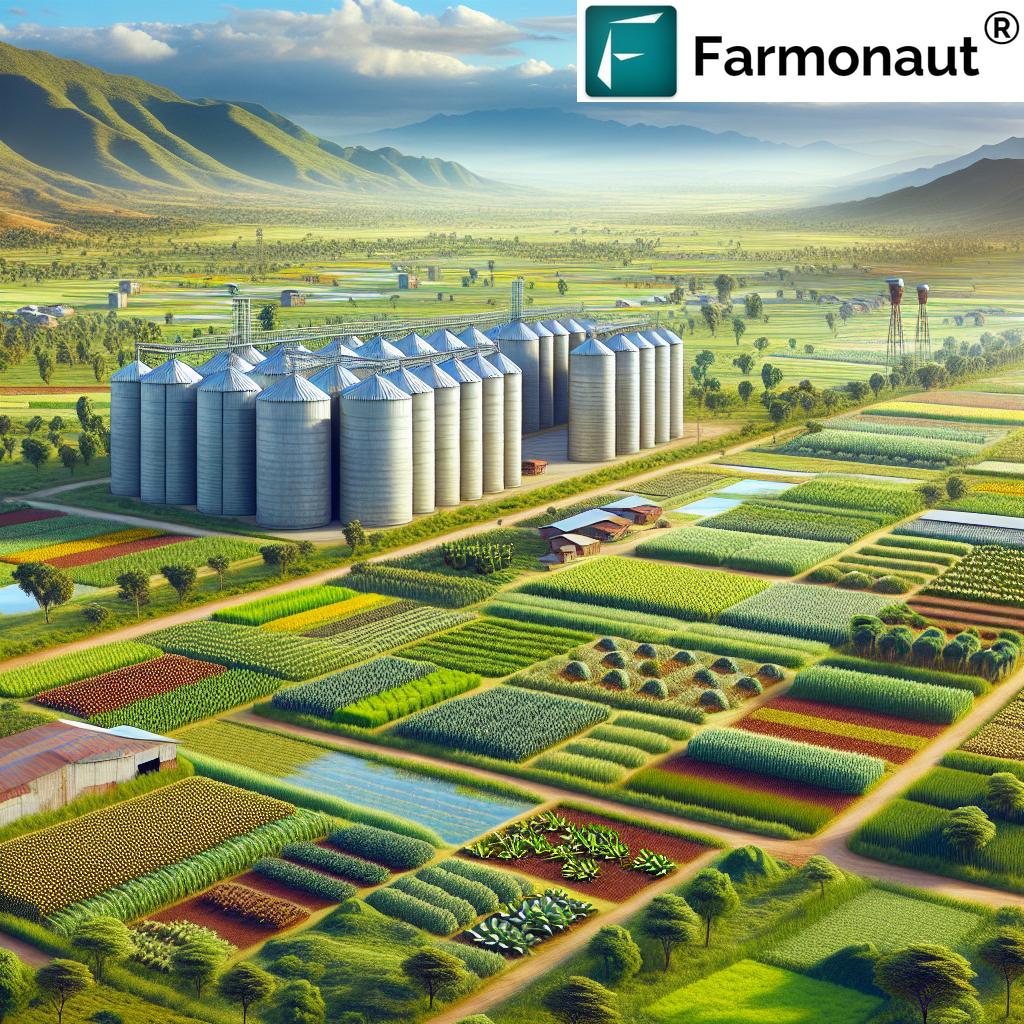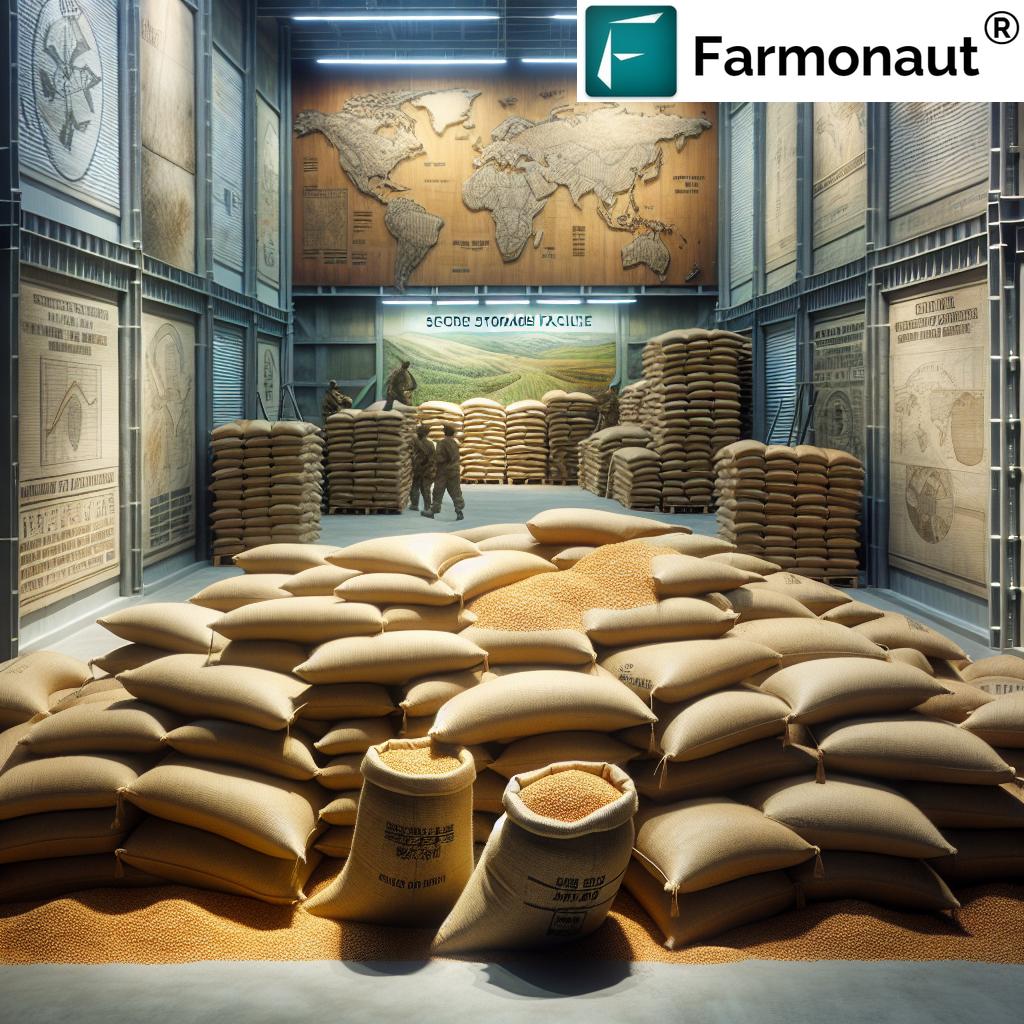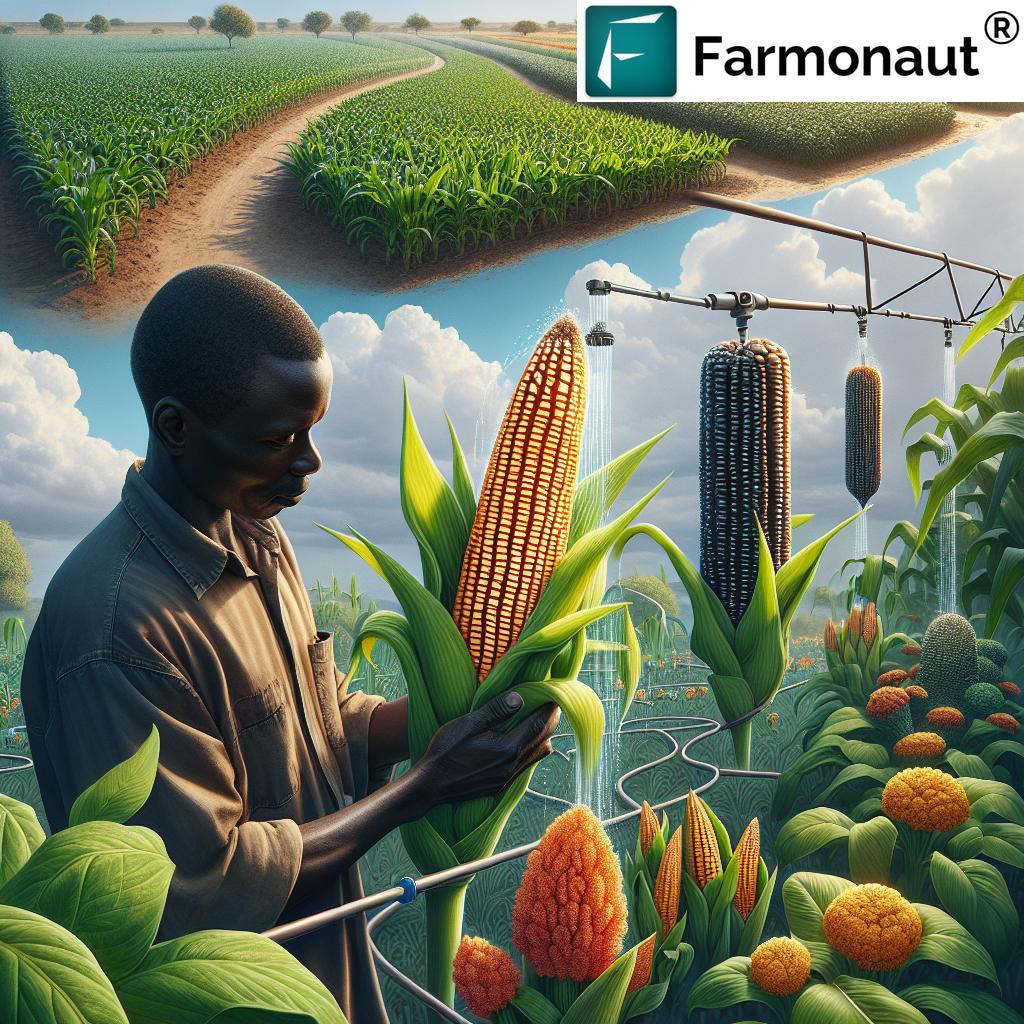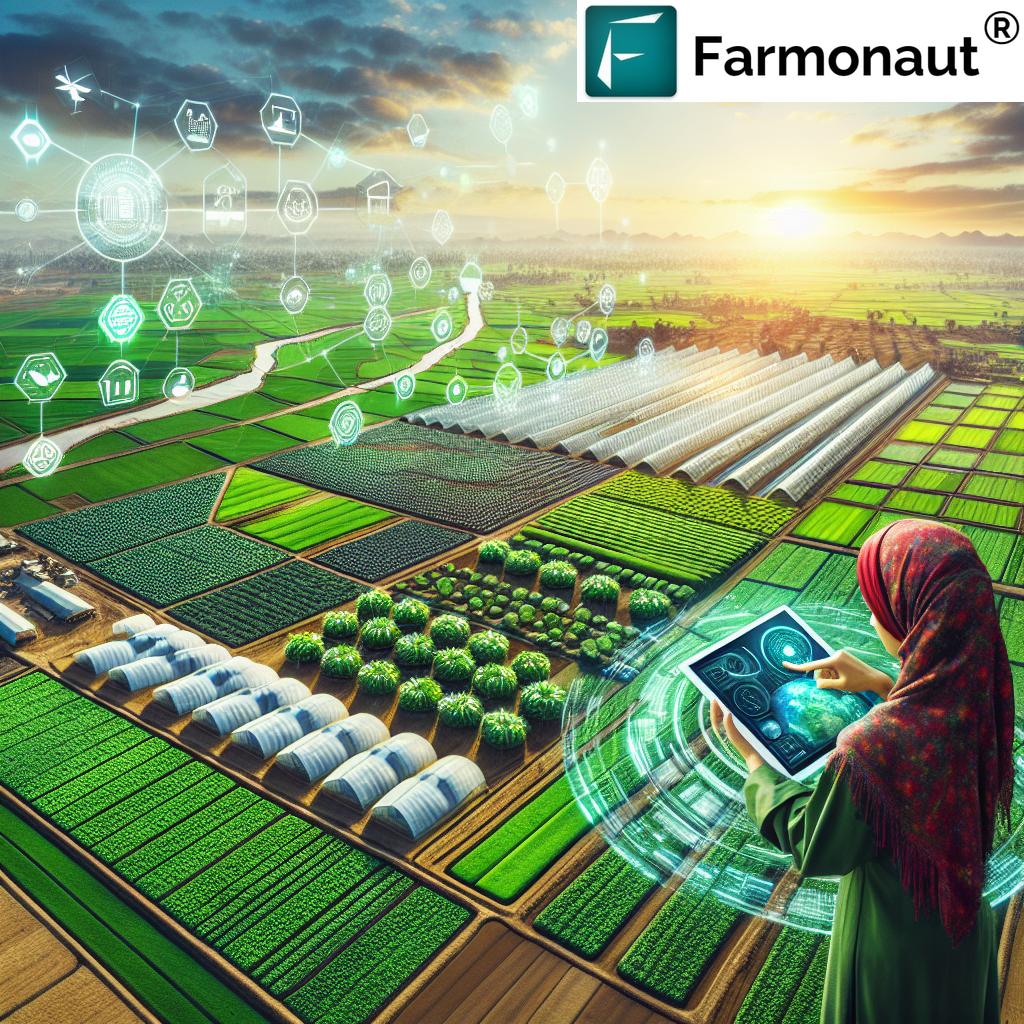7 Key Steps to Boost Food Sovereignty and Security in Ethiopia

Introduction: Why Food Sovereignty in Ethiopia Matters
Food sovereignty in Ethiopia is not merely an agricultural aim; it is fundamentally interlinked with national food security, sustainable resilience, and the empowerment of our society. Dignity and independence hinge on our ability to feed ourselves, render humanitarian assistance proactively, and weather disasters without solely depending on external support or volatile supply chains.
As underscored in an interview with the National Disaster Risk Management (NDRMC) Commissioner, Shiferaw Teklemariam in Addis Ababa (April 2025), achieving sovereignty requires us to move beyond mere crisis response. We must proactively build, protect, and own our food systems—from grain production and harvest, to distribution and emergency food support—so that we can assert control over our own national destiny.
This comprehensive guide explores seven critical steps to strengthen food sovereignty in Ethiopia, each rooted in proactive measures, regional self-reliance, and robust disaster risk management. These steps collectively support the vision of making Ethiopia a beacon of sustainable agricultural development in Africa.
Read on to discover practical actions, national initiatives, and innovative agri-tech solutions—including how tools like Farmonaut are shaping smarter, more resilient farming—so that, together, we can secure our nation’s food future.

Are you a developer or agritech enterprise? Leverage real-time satellite-based agri-data via the Farmonaut Satellite API. Full documentation here: API Developer Docs.
Step 1: Establishing National Strategic Grain Reserves
Our journey towards robust food sovereignty in Ethiopia begins with establishing a strategic grain reserve at every level of the supply chain. According to NDRMC, the country produces nearly 600 million quintals of grain annually, but the goal is to maintain a reserve of 2 million metric tons to address emergency food support and disaster relief.
Why National Grain Reserves Are Essential
- Cushioning Against Shocks: A well-stocked reserve buttresses the nation in times of drought, crop failure, or political disturbance, ensuring there is a buffer to support affected populations.
- Empowering Humanitarian Response Mechanisms: National reserves enable rapid humanitarian food assistance during crises, minimizing dependency on unpredictable foreign aid.
- Stabilizing Markets and Encouraging Production: By managing reserves efficiently, the government can regulate price volatility and incentivize continued cultivation and grain production in Ethiopia.
Where We Stand: The nation’s regions collectively hold about 1 million quintals in reserve—40% of the current target, marking significant progress towards full resilience by the end of next Ethiopian year.
Establishing and maintaining these reserves ties directly into national food security and bolsters humanitarian response capability. For agile logistics and management, consider farm fleet management tools that optimize the storage and delivery systems for grains.
Step 2: Advancing Cluster Farming Initiatives for Greater Productivity
The introduction of cluster farming initiatives through the “Bounty of the Basket” program is a transformative step for agricultural development Ethiopia. By pooling smallholder plots into larger management clusters, we foster shared knowledge, resources, and mechanization, leading to greater efficiency and consistent production.
Cluster Farming Enhances Food Sovereignty
- Higher and More Reliable Yields: Combining land and labor allows us to tap into economies of scale, diversify crops, and mitigate isolated risks impacting harvests.
- Resource Sharing: Farmers gain collective access to machinery, irrigation, pest control, and extension services, eliminating duplication and reducing costs.
- Enabling Technology Adoption: Clusters are more likely to benefit from precision agriculture platforms such as Farmonaut’s large scale farm management solutions, which offer real-time satellite-based monitoring for clusters and cooperatives, maximizing yield per hectare.
- Facilitating Distribution: Coordinated approaches streamline crop distribution, reduce post-harvest losses, and enable efficient movement from farm gate to market.
As we continue to expand cluster farming, communities can increase national harvest output and enhance our collective resilience, supporting both the domestic market and surplus distribution.
Step 3: Scaling Up Fruit and Vegetable Cultivation
Broadening the agricultural base is vital for food sovereignty. Ethiopia’s “Bounty of the Basket” initiative is pushing extensive development in fruit and vegetable cultivation, complementing traditional grain systems and diversifying both diets and income streams.
Benefits of Expanding Fruits and Vegetables
- Improved Nutrition and Diet Diversity: By increasing fruit and vegetable access, we address both macro- and micronutrient deficiencies, vital for population health.
- Adaptation to Climate Variance: Different crops have distinct climate and soil requirements, so diversifying through new varieties spreads climate and pest risk.
- Enhanced Market Flexibility: Fruits and vegetables can be sold fresh or processed, supporting smallholder income even in years of partial grain shortfall.
- Supporting Export and Local Value Addition: Surplus fruits/vegetables can bolster Ethiopia’s agricultural exports, contributing to the national economy and foreign exchange earnings.
Tools like Farmonaut’s plantation and crop advisory solutions leverage satellite and AI to guide farmers on optimal planting times, soil health, and crop rotation—boosting yields sustainably while reducing environmental impact.
Step 4: Implementing Robust Disaster Risk Management Mechanisms
Ethiopia’s geography and climate expose us to floods, droughts, earthquakes, landslides, and locust infestations. Disaster risk management is thus a core pillar of food sovereignty and humanitarian preparedness. The NDRMC is focusing on proactively mitigating hazards through robust early warning systems, preparedness, and community-based response.
Key Components of Disaster Risk Management
- Hazard Mapping: Identifying climate, soil, and infrastructure risks allows better farm planning. Satellite-based remote sensing, like that offered by Farmonaut technologies, enables precise hazard mapping at local and regional levels.
- Preparedness and Rapid Response: Establish storage (warehouses at regional and woreda levels), transportation options, and stockpiles of grain, food supplies, and emergency essentials to enable swift action when disasters strike.
- Integration with Agricultural Production: Disaster risk management must be woven into the planting and harvest calendar to minimize production shocks from unpredictable weather or market disruptions.
A disaster-resilient agricultural sector is less vulnerable to crises and better able to contribute to national food security.
Step 5: Developing Humanitarian Response Mechanisms and Food Support Infrastructure
Fast and flexible humanitarian support sovereignty is non-negotiable. The ability to support affected populations during both surplus and deficit seasons defines our true self-reliance.
As noted by Commissioner Shiferaw, nine Ethiopian regions have already achieved humanitarian self-reliance, while others have disaster funds in place. The necessity is to ensure preparedness and resilient humanitarian response mechanisms for the whole country.
Pillars of Effective Humanitarian Support Sovereignty
- Decentralized Warehousing: Warehouses at both regional and woreda levels allow rapid and targeted delivery of food and supplies—key for minimizing crisis impact.
- Data-Driven Rapid Response: AI-powered crop advisory tools help local authorities anticipate food needs and efficiently manage grain reserves or relief resources.
- Transparent Distribution Systems: Blockchain technology, as integrated in Farmonaut’s traceability solution, helps ensure prompt, fair, and fraud-free delivery of humanitarian food assistance, while maintaining food safety and consumer trust.
This comprehensive approach guarantees that emergency food support reaches all vulnerable populations—boosting both national dignity and our freedom to determine our response, independent of outside influence.
Step 6: Empowering Regional Self-Reliance and Community-Based Preparedness
Food sovereignty strengthens not only national resilience, but also creates robust community and regional self-reliance. Each region must establish its own disaster risk mitigation and food reserve systems in accordance with its geography, population, and cropping patterns.
Regional Initiatives That Bolster Sovereignty
- Establishing Disaster Response Funds: Empowering woredas and regions to assemble financial reserves and relief supply stockpiles.
- Organizing Local Farmer Cooperatives: Sharing harvest data, coordinating planting and distribution, and fostering peer learning.
- Encouraging Decentralized Governance: Regions with the capacity to independently manage humanitarian response ensure swifter, context-sensitive assistance, unburdening central agencies.
- Customizing Risk Management Mechanisms: From flood-adapted rice in lowlands to drought-resistant sorghum in arid zones, local solutions are key.
Regional autonomy ensures that all corners of Ethiopia benefit from the protection food sovereignty offers—and that no population slips through the cracks, even in times of widespread hazard or market instability.
Step 7: Integrating Technology and Data-Driven Agricultural Management
Modern food sovereignty is inseparable from cutting-edge technology. Satellite imagery, machine learning, blockchain, and AI-driven advisory tools mean we can proactively manage, monitor, and adapt our food systems for maximum efficiency, traceability, and sustainability.
How Technology Supports Food Sovereignty in Ethiopia
- Satellite Crop Health Monitoring: Farmonaut’s satellite-based crop health monitoring delivers real-time insights on NDVI, soil moisture, and pest outbreaks. This helps us target irrigation and fertilizer, making every input count.
- AI-Enhanced Farm Advisory: Personalized, real-time farming advice improves yields, optimizes planting patterns, and reduces waste.
- Blockchain Product Traceability: Secure digital records on food from “farm to fork”—as offered by Farmonaut’s traceability solutions—help us establish and prove the safety, authenticity, and quality of both local and exported products.
- Fleet and Resource Management Tools: Maximize logistical efficiency, reduce transportation waste, and speed up delivery of harvests and humanitarian aid using digital fleet management platforms.
- Carbon Footprinting: Track emissions and environmental impact, supporting Ethiopia’s climate commitments and sustainability agenda.
- Financing with Confidence: Satellite-powered verification expedites crop loan and insurance access, supporting risk mitigation for both farmers and lenders. More at Farmonaut Crop Loan & Insurance Verification.
Integrating these tools into both national programs and community farming operations dramatically boosts our collective capacity for sustainable, sovereign, and secure food production.
Comparative Impact Table: Food Sovereignty Steps in Ethiopia
Key: Food security values reflect improvement in national food availability and stability. Disaster risk numbers show reduction in impact from hazards. Sustainable agriculture percentage indicates growth in environmentally resilient practices.
Farmonaut: Catalyzing Sustainable Agricultural Development in Ethiopia
Technological empowerment is central to food sovereignty in Ethiopia. Farmonaut, as a leading agri-technology provider, delivers affordable, actionable intelligence via satellite imagery, advanced AI, blockchain, and real-time farm management tools accessible on mobile and the web.
Farmonaut’s Key Services for Disaster-Proof, Sovereign Agriculture:
- Crop Health Monitoring: Multispectral satellite images deliver accurate crop performance and stress analytics, enabling us to proactively address disease, moisture stress, and optimize resource use.
- AI-driven Farm Advisory: Jeevn AI offers real-time, field-specific advice, supporting rapid response to weather extremes and crop threats.
- Blockchain-Based Traceability: Every step in the supply chain—production, movement, processing, and distribution—is tracked and secured for food safety, quality control, and export compliance.
- Fleet and Resource Management: Streamlines harvesting logistics, grain delivery, and emergency food support mobilization.
-
Carbon Footprinting: Integrated tools track agricultural emissions, helping us uphold international commitments and bolster long-term sustainability.
Find out more: Farmonaut Carbon Footprinting -
Crop Loan and Insurance Support: Satellite-based farm verification eases access to finance and insurance, supporting risk reduction for all stakeholders.
Learn more: Crop Loan and Insurance
With Farmonaut, Ethiopian farmers, agribusinesses, NGOs, and government bodies can rapidly scale up resilient, profitable, and eco-friendly food systems.
Frequently Asked Questions (FAQ): Food Sovereignty and Security in Ethiopia
1. What is the difference between food sovereignty and food security?
While both relate to feeding the population, food sovereignty is about having control over the entire food system – from production to consumption – free from undue external influence. Food security ensures everyone has access to enough safe and nutritious food. Sovereignty is a prerequisite for genuine security and national independence.
2. How does disaster risk management strengthen food sovereignty in Ethiopia?
Strong disaster risk management helps us proactively prepare for hazards (such as drought, floods, and pests), reducing emergency response time and losses to crops and livelihoods. This ensures food supply continuity and reduces dependency on foreign aid.
3. What is cluster farming, and why is it important?
Cluster farming initiatives pool smallholder farmers and their resources, making it easier to boost productivity, share equipment, implement modern technology, and market crops efficiently. This collective approach is proven to increase grain production in Ethiopia and improve community resilience.
4. Why focus on fruit and vegetable cultivation alongside grains?
Diversifying crops with fruit and vegetable cultivation enriches nutrition, boosts smallholder incomes, spreads climate and pest risk, and creates greater resilience against market shocks. It also opens regional and international market opportunities.
5. How does Farmonaut support agricultural development in Ethiopia?
Farmonaut provides affordable, cutting-edge satellite imagery, AI advisory, blockchain traceability, fleet/resource management, and environmental monitoring. These help farmers, agribusinesses, cooperatives, and government agencies monitor, manage, and maximize food production effectively—while reducing environmental impact and supporting food sovereignty.
6. What are strategic grain reserves, and how are they managed?
A strategic grain reserve is a stockpile of staple grains maintained at household, woreda, regional, and national levels. It guarantees emergency food support during times of shortage and stabilizes grain prices throughout the year. Effective management requires storage infrastructure, reliable monitoring, and transparent distribution systems.
7. How can Ethiopian farmers access Farmonaut’s technology?
Farmonaut platforms are available via web, Android, iOS apps, and API. Individual farmers, cooperatives, government agencies, and NGOs can access tailored services to digitize their farm management and boost productivity.
Conclusion: Realizing Ethiopia’s Aspiration for Food Sovereignty
Securing food sovereignty in Ethiopia is the foundation of our freedom, dignity, and lasting prosperity. By following these seven key steps—from building robust grain reserves and advancing cluster farming, to scaling up diversified crop production, implementing disaster risk management, structuring humanitarian response, empowering our regions, and adopting innovative technology—we are proactively moving toward a resilient, independent, and sustainable food system.
With advanced platforms like Farmonaut, we unlock the potential for smarter, data-driven agricultural development Ethiopia truly needs. Using real-time crop health insights, blockchain traceability, and comprehensive management solutions, all stakeholders—from smallholder farmers to government agencies—may now act decisively to bolster national food security and reduce disaster risk.
Let us, as a nation, be deeply engaged and united in realizing this critical objective. Through collective effort and innovative spirit, Ethiopia can not only secure its own sustenance, but also inspire food sovereignty across the continent.
Discover more about modern precision agriculture and take the first step in transforming your farming practice:
















